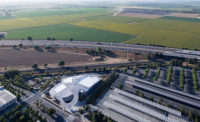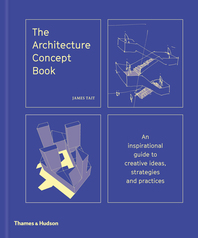A longtime member of the faculty at Columbia University in New York, historian Kenneth Frampton, at 91 years old, remains a formidable force in architecture. In 2020, his significantly revised and expanded fifth edition of Modern Architecture: A Critical History was released, as was Modern Architecture and the Lifeworld: Essays in Honor of Kenneth Frampton. Yet it does not stop there, and, earlier this year, The Other Modern Movement appeared. In it, Frampton profiles 19 architects outside the Modernist mainstream. (While the book technically spans several decades, the majority of spotlighted projects were built in the 1930s.)
Some architects, like Arne Jacobsen and Erich Mendelsohn, are well-known. Others, like Pierre Chareau and Evan Owen Williams, gained fame mainly through one seminal work—the Maison de Verre in Paris and the Boots Pharmaceutical Plant in England, respectively (both completed in 1932). Still others, like Vilhelm Lauritzen, Alejandro de la Soto, and Jaromír Krejcar (whose Czechoslovak Pavilion at the Paris World Exhibition in 1937 illustrates the book cover), you may not have heard of at all. Then there’s Rudolf Schindler and his onetime collaborator and later rival Richard Neutra, who seem as if they don’t belong among the “outsiders.”
Indeed, well over half of the 19 subjects, including Dutch architect Johannes Duiker, Belgian Louis Herman De Koninck, and Swiss collaborators Werner Moser and Max Ernst Haefeli, were involved—some more actively than others—in CIAM (Congrès internationaux d’architecture moderne), the very organization, long connected to Le Corbusier, that advanced the Modern movement. So what then of this “other” movement?
The book’s title is intriguing, if not misleading. The grouping of architects included here reflects neither an organized movement nor any clear affiliations among the chosen protagonists. “The ‘otherness’ represented by this survey,” Frampton writes, “arises from identifying buildings that depart in subtle ways from functionalism. The works of these architects may be seen as having been both marginal and canonical at the same time . . .”
Czech architect Antonin Raymond’s Tokyo Golf Club (1932), for instance, may be seen as a typical International Style building, but with unusual proportions and distinctive detailing. Likewise, Willem Marinus Dudok’s De Bijenkorf department store in Rotterdam (1930), features five strips of horizontal industrial glazing on the main facade, juxtaposed with bands of brick and ornamental tiles.
But perhaps there are other kinds of “otherness” highlighted here. Like Mies van der Rohe—who is most certainly not included in this book—Mendelsohn, Schindler, Neutra, and Georgian-born British architect Berthold Lubetkin, were also émigrés, but they were all Jewish, unlike Mies. Also featured is Eileen Gray, the only woman. Max Bill may be better known as an artist and industrial/graphic designer than as an architect, but he is here, as is Swedish luminary Sigurd Lewerentz, long in the shadow of the better-known Gunnar Asplund, but who nevertheless enjoys a cultlike devotion.
Whatever the case, The Other Modern Movement offers an opportunity to re-examine the Western canon of 20th-century architecture—which Frampton himself was crucial in establishing—and delve deeper into the work of lesser-known practitioners, all of whom had previously been at least referenced in A Critical History. And, despite Frampton’s matter-of-fact analyses, some of the projects included—illustrated with drawings and black-and-white photography—will astound. The large oval courtyard of Lewerentz’s Social Security Administration Building in Stockholm (1932) is a sight to behold. And Duiker’s Open-Air School in Amsterdam (1930) featured extraordinary expanses of glass for its time, the architect pointing to the “hygienic factor” as propelling his dematerialization of construction.






